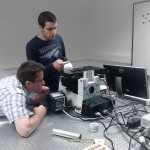
After the cleaning phase we started packing out from the boxes. Click for Gallery Read more

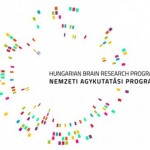
A video from the Hungarian Brain Research Program (in which we are involved) press conference. [in hungarian only]
After the Bólyai-building reconstruction project we finally got our new laboratory in the basement. At the moment we’re at low level hardware mode. Some cleaning has to be done, but after that, real science can start.
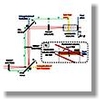
The reduction of out of focus signal is a general task in fluorescence microscopy and is especially important in the recently developed super-resolution techniques because of the degradation of the final image. Several illumination methods have been developed to provide decreased out of focus signal level relative to the common epifluorescent illumination. In this paper we examine the highly inclined and the total internal reflection illumination techniques using the ray tracing method. Two merit functions were introduced for the quantitative description of the excitation of the selected region. We studied the feasibility of illumination methods, and the required corrections arising from the imperfections of the optical elements.

Localization-based super-resolution microscopy image quality depends on several factors such as dye choice and labeling strategy, microscope quality and user-defined parameters such as frame rate and number as well as the image processing algorithm. Experimental optimization of these parameters can be time-consuming and expensive so we present TestSTORM, a simulator that can be used to optimize these steps. TestSTORM users can select from among four different structures with specific patterns, dye and acquisition parameters. Example results are shown and the results of the vesicle pattern are compared with experimental data. Moreover, image stacks can be generated for further evaluation using localization algorithms, offering a tool for further software developments.
Biomedical Optics Express, Vol. 5, Issue 3, pp. 778-787 (2014)

József Sinkó has had a successful grant application at Campus Hungary Program. He will cover his journey to Oslo, Norway to ELMI 2014 conference by this grant.
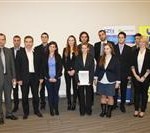
József Sinkó won FERROÉP – Pro Talentis Award. Pro Talentis Awards are founded by industrial companies for talented students.
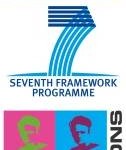
Miklós Erdélyi was awarded a four-year Marie-Curie integration grant on Development and application of super resolution localization microscopy starting in September 2013.
You must be logged in to post a comment.